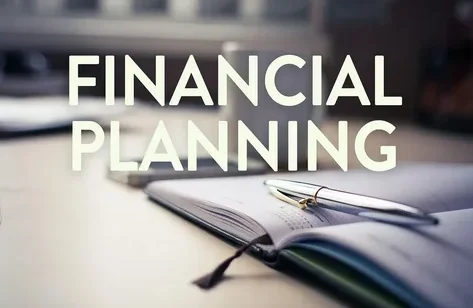Financial literacy programs for young adults have become more crucial than ever as today’s generation faces unique economic challenges, from soaring student debt to an increasingly complex financial landscape. With 66% of millennials lacking basic financial knowledge and the average student graduating with over $37,000 in debt, comprehensive financial education has transformed from a luxury into a necessity for young people entering adulthood.
The importance of early financial education cannot be overstated. Young adults who participate in structured financial literacy programs are 42% more likely to have emergency savings, 35% more likely to invest in retirement accounts, and significantly less likely to carry high-interest debt throughout their lives. These programs provide the foundational knowledge and practical skills needed to navigate everything from creating budgets and managing credit to understanding investments and planning for major life purchases.
Whether you’re a college student, recent graduate, or young professional just starting your career, investing in financial education today will pay dividends for decades to come. This comprehensive guide explores the best financial literacy programs available, their key benefits, and how to choose the right program to meet your specific financial goals and learning style.
Financial Literacy Programs for Young Adults Are Essential
Today’s young adults face a perfect storm of financial challenges that previous generations never encountered. Rising education costs, stagnant wages, expensive housing markets, and the gig economy have created a complex financial environment that requires sophisticated money management skills to navigate successfully.
Research from the National Financial Educators Council reveals that financial illiteracy costs the average American approximately $1,230 annually in poor financial decisions. For young adults, this cost can be even higher as early financial mistakes compound over time. Poor credit decisions made in your twenties can affect your ability to buy a home, start a business, or even secure certain jobs for years to come.
Financial literacy programs specifically designed for young adults address these unique challenges by focusing on relevant topics like student loan management, building credit from scratch, navigating entry-level salaries, and understanding employee benefits. These programs recognize that young adults learn differently than older demographics, often preferring interactive, digital-first approaches that fit into busy schedules filled with work, education, and social commitments.
The benefits extend far beyond avoiding financial mistakes. Young adults who complete comprehensive financial education programs report higher confidence in making financial decisions, increased savings rates, and better overall financial well-being. They’re more likely to negotiate salaries, take advantage of employer benefits, and make informed decisions about major purchases like cars and homes.
Top Financial Literacy Programs for Young Adults in 2025

Online Financial Education Platforms
Khan Academy’s Personal Finance Course stands out as one of the most comprehensive free financial literacy programs available to young adults. This interactive platform covers everything from basic budgeting and saving to advanced topics like taxes and retirement planning. The program uses engaging videos, practice exercises, and real-world examples that resonate with young learners.
The course structure allows students to progress at their own pace, making it perfect for busy young adults juggling work and education. Key modules include understanding credit scores, student loan strategies, investment basics, and insurance fundamentals. What sets Khan Academy apart is its practical approach – instead of just teaching theory, the program provides actionable steps students can implement immediately.
Coursera’s Financial Markets and Personal Finance Specializations offer university-level financial education from top institutions like Yale and Duke. These programs provide in-depth knowledge suitable for young adults who want a more academic approach to financial literacy. The specializations include verified certificates that can enhance resumes and LinkedIn profiles, adding professional value beyond personal financial knowledge.
Bank-Sponsored Financial Education Programs
Many major banks offer sophisticated financial literacy programs tailored to young adults, often at no cost to participants. Wells Fargo’s Hands on Banking provides comprehensive online modules covering budgeting, credit, loans, and investing. The program includes interactive calculators, worksheets, and planning tools that young adults can use long after completing the coursework.
Chase’s Financial Education offerings focus heavily on digital banking skills and understanding modern financial products. Their programs are particularly valuable for young adults who want to understand online banking, mobile payment systems, and digital investment platforms. The bank regularly updates content to reflect current financial trends and technologies.
University and Community College Programs
Many colleges now offer standalone financial literacy courses or integrate financial education into existing programs. Arizona State University’s Financial Literacy Program has become a model for other institutions, combining online learning with peer support groups and one-on-one counseling sessions.
Community colleges often provide the most accessible financial education options, with evening and weekend classes designed for working young adults. These programs typically cost less than university options while providing highly practical, immediately applicable knowledge.
Key Components of Effective Financial Education Programs
Budgeting and Cash Flow Management
The foundation of any quality financial literacy program for young adults begins with comprehensive budgeting education. Effective programs teach multiple budgeting methods, from traditional zero-based budgeting to modern approaches like the 50/30/20 rule, allowing young adults to find systems that work with their lifestyle and income patterns.
Quality programs go beyond basic budgeting theory to address the real challenges young adults face. This includes managing irregular income from gig work, budgeting with student loans, and handling the transition from college to professional life. The best programs provide digital tools and apps that make budgeting practical and sustainable for tech-savvy young learners.
Cash flow management education covers understanding the difference between income and net worth, managing monthly cash flow variations, and building systems to avoid living paycheck to paycheck. Programs should include practical exercises using real-world scenarios that young adults commonly encounter.
Credit Building and Management
Understanding credit is crucial for young adults, yet many programs fail to provide comprehensive credit education. Effective financial literacy programs cover credit score factors, how to build credit from scratch, and strategies for improving damaged credit. This education is particularly vital for young adults who may have made early credit mistakes or have limited credit history.
Programs should explain different types of credit products, from credit cards and student loans to auto financing and mortgages. Young adults need to understand how their credit decisions today will impact their financial opportunities for decades to come. The best programs include interactive credit score simulators that show how different actions affect credit ratings.
Credit management education must also cover warning signs of credit trouble, debt consolidation options, and recovery strategies. With credit card debt among young adults reaching record highs, comprehensive credit education has become essential for financial survival.
Investment and Retirement Planning
While retirement may seem distant to young adults, compound interest makes early investing incredibly powerful. Quality financial literacy programs emphasize this advantage and provide practical investment education suitable for beginners. This includes understanding different account types like 401(k)s, IRAs, and taxable investment accounts.
Programs should cover basic investment concepts like risk tolerance, diversification, and expense ratios without overwhelming students with complex financial jargon. The focus should be on getting started with investing rather than advanced trading strategies. Many young adults benefit from learning about index funds and target-date funds as simple, effective investment options.
Retirement planning education for young adults should emphasize the power of starting early, even with small amounts. Programs should include retirement calculators that show how different contribution levels and time horizons affect final outcomes. This visual representation often motivates young adults to begin investing sooner.
How to Choose the Right Financial Literacy Program
Assessing Your Learning Style and Schedule
Young adults have diverse learning preferences and busy schedules that must be considered when selecting financial education programs. Some learners thrive in traditional classroom environments with structured schedules and peer interaction, while others prefer self-paced online programs they can complete around work and other commitments.
Consider your current financial knowledge level when evaluating programs. Complete beginners may benefit from comprehensive programs that start with basic concepts, while young adults with some financial experience might prefer targeted programs focusing on specific areas like investing or home buying. Many programs offer assessment tools to help determine appropriate starting points.
Time commitment is another crucial factor. Some programs require significant time investments over several weeks or months, while others offer intensive weekend workshops or modular approaches that allow flexible completion schedules. Be realistic about your available time and choose programs that fit your lifestyle to ensure successful completion.
Evaluating Program Quality and Credentials
Not all financial literacy programs are created equal, and young adults should carefully evaluate program quality before investing time and money. Look for programs developed by recognized financial institutions, accredited educational organizations, or certified financial planning professionals. Programs should provide clear learning objectives and measurable outcomes.
Quality programs include up-to-date information that reflects current financial markets, regulations, and technologies. Financial education that covers outdated concepts or ignores modern financial tools like mobile banking, cryptocurrency, or online investing platforms may not provide adequate preparation for today’s financial landscape.
Check for program reviews and success stories from previous participants. Quality programs often provide testimonials, completion statistics, and information about participant outcomes. Be wary of programs that make unrealistic promises about financial success or guarantee specific investment returns.
Cost Considerations and Value
Financial literacy programs range from free options to expensive comprehensive courses costing thousands of dollars. Young adults, often operating on tight budgets, need to carefully evaluate cost versus value when selecting programs. Many excellent free and low-cost options provide comprehensive education without significant financial investment.
Consider the total cost of participation, including materials, certification fees, and any required software or tools. Some programs appear inexpensive but have hidden costs that can add up quickly. Conversely, more expensive programs may provide additional value through personalized coaching, certification credentials, or ongoing support that justify higher costs.
Evaluate potential return on investment for paid programs. If a program costs $500 but helps you avoid financial mistakes worth thousands of dollars or enables you to earn higher investment returns, the cost may be justified. However, be cautious of programs that seem overpriced compared to similar offerings or don’t provide clear value propositions.
Free vs. Paid Financial Education Options
Advantages of Free Programs
Free financial literacy programs offer significant advantages for young adults, particularly those with limited budgets or uncertain about their commitment to financial education. Many free programs provide comprehensive coverage of essential topics without compromising educational quality. Government agencies, non-profit organizations, and financial institutions often sponsor high-quality free programs as public service initiatives.
Free programs allow young adults to explore financial education without financial risk. This is particularly valuable for those unsure about their learning preferences or specific educational needs. Students can sample different teaching styles and program formats before committing to paid options.
Many free programs provide the same foundational knowledge as expensive alternatives. Topics like budgeting basics, understanding credit, and investment fundamentals are well-covered in quality free programs. For young adults seeking basic financial literacy, free options often provide sufficient education to make significant improvements in financial management.
Benefits of Paid Programs
Paid financial literacy programs often provide enhanced features that may justify their cost for serious learners. These programs typically offer more personalized attention, detailed curriculum, and ongoing support that can accelerate learning and improve outcomes. Paid programs may include one-on-one coaching sessions, personalized financial plans, and access to professional financial advisors.
The structure and accountability built into paid programs can be valuable for young adults who struggle with self-directed learning. Paid programs often include deadlines, assignments, and progress tracking that help ensure completion. This structure can be particularly beneficial for busy young adults who might otherwise struggle to complete self-paced free programs.
Paid programs frequently provide credentials or certifications that can have professional value. Some employers value financial literacy certifications, and these credentials can demonstrate commitment to professional development. Additionally, paid programs often provide ongoing access to updated materials and continuing education opportunities.
Digital Tools and Apps for Financial Learning
Popular Financial Education Apps
The rise of financial technology has created numerous apps specifically designed for financial education and money management. Mint combines budgeting tools with educational content, helping young adults learn while managing their actual finances. The app provides personalized tips based on spending patterns and financial goals.
YNAB (You Need A Budget) goes beyond simple budgeting to teach fundamental financial principles through hands-on practice. The app’s educational approach helps users understand the psychology of money management while building practical skills. YNAB offers free educational webinars and extensive online resources to supplement the app experience.
Acorns combines micro-investing with financial education, making investing accessible for young adults with limited funds. The app rounds up purchases and invests spare change while providing educational content about investing principles. This approach helps young adults learn about investing while actually building investment portfolios.
Interactive Learning Platforms
Modern financial education increasingly relies on interactive platforms that engage young adults through gamification and practical exercises. Biz Kid$ Game Zone uses games and challenges to teach financial concepts in an engaging format that appeals to young learners. The platform covers topics from basic money management to entrepreneurship.
PracticalMoneySkills Games from Visa provides interactive simulations that let young adults practice financial decisions in risk-free environments. These games cover scenarios like buying cars, renting apartments, and managing credit cards, allowing learners to see consequences of different financial choices.
Virtual reality and augmented reality are emerging as powerful tools for financial education. Some programs now offer VR experiences that simulate real-world financial scenarios, from job interviews and salary negotiations to home buying and investment decisions. These immersive experiences can be particularly effective for young adults who grew up with digital technology.
Building Long-term Financial Habits

Creating Sustainable Money Management Systems
Financial literacy education must go beyond knowledge transfer to help young adults build sustainable money management habits. The most effective programs focus on behavior change, recognizing that knowing what to do financially is different from consistently doing it. Successful habit formation requires understanding the psychology of money management and developing systems that work with human nature rather than against it.
Automation plays a crucial role in sustainable financial systems for young adults. Programs should teach how to automate savings, bill payments, and investment contributions to reduce the reliance on willpower and memory. Young adults who automate their finances are significantly more likely to achieve their financial goals consistently.
The best programs help young adults identify their personal financial triggers and develop strategies for managing them. This might include understanding emotional spending patterns, recognizing lifestyle inflation tendencies, or developing systems for handling financial peer pressure. Addressing these psychological aspects of money management is essential for long-term success.
Tracking Progress and Staying Motivated
Effective financial literacy programs teach young adults how to track their progress and maintain motivation over time. This includes setting realistic financial goals, measuring progress regularly, and celebrating achievements along the way. Young adults who track their financial progress are more likely to stay committed to their financial plans and achieve their objectives.
Technology provides powerful tools for progress tracking, from automated net worth calculations to spending analysis and goal monitoring. Programs should teach young adults how to use these tools effectively without becoming obsessed with daily financial fluctuations. The key is finding the right balance between awareness and anxiety.
Building financial habits requires consistency over perfection. Quality programs emphasize that financial setbacks are normal and provide strategies for recovering from mistakes without abandoning long-term goals. This resilience-building aspect of financial education is particularly important for young adults who may face various financial challenges throughout their careers.
Measuring Success in Financial Education
Key Performance Indicators
Success in financial literacy programs for young adults can be measured through various quantitative and qualitative indicators. Immediate measures might include completion rates, test scores, and participant satisfaction surveys. However, the true value of financial education becomes apparent through long-term behavioral changes and improved financial outcomes.
Financial behavior changes provide the most meaningful success metrics. These might include increased savings rates, reduced debt levels, improved credit scores, and earlier retirement contributions. Programs should establish baseline measurements and track participant progress over time to demonstrate real-world impact.
Confidence and comfort with financial decision-making represent important qualitative measures of program success. Young adults who complete quality financial literacy programs report feeling more confident about major financial decisions, more comfortable discussing money topics, and more optimistic about their financial futures.
Long-term Financial Outcomes
The ultimate goal of financial literacy programs for young adults is improved long-term financial well-being. This includes building wealth through consistent saving and investing, avoiding costly financial mistakes, and achieving major financial goals like homeownership and retirement security. These outcomes may take years or decades to fully materialize.
Research shows that young adults who complete comprehensive financial education programs accumulate wealth faster than their peers, even when controlling for income levels. They’re more likely to maximize employer benefits, make informed investment decisions, and avoid high-cost financial products that can derail long-term financial progress.
Career advancement often correlates with financial literacy, as financially educated young adults are more likely to negotiate salaries, pursue additional education or training, and make strategic career decisions. The confidence and analytical skills developed through financial education can have broad impacts beyond personal money management.
Conclusion
Financial literacy programs for young adults represent one of the most valuable investments you can make in your future. With the complex financial challenges facing today’s young generation, from student debt to housing costs to retirement planning, comprehensive financial education has become essential rather than optional. The programs highlighted in this guide offer various approaches to building the money management skills that will serve you throughout your life.
The key to success is taking action now rather than waiting for the “perfect” time or program. Whether you choose a free online course, enroll in a comprehensive paid program, or combine multiple educational resources, the important thing is to begin your financial education journey immediately. The earlier you start building financial knowledge and habits, the more time compound interest and smart financial decisions have to work in your favor.
Remember that financial literacy is not a destination but an ongoing process. Markets change, new financial products emerge, and your personal financial situation will evolve throughout your career. The best financial literacy programs for young adults provide not just current knowledge but also the framework for continued learning and adaptation as your financial needs grow more complex.
Start by assessing your current financial knowledge, identifying your learning preferences, and selecting a program that fits your schedule and budget. Whether you’re struggling with debt, just starting your career, or looking to optimize your financial strategy, there are financial literacy programs designed to meet your specific needs and help you build a secure financial future.

















